Human traffic, mostly by ship, has transformed many of earth’s islands into rodent-infested hells. Of the 245 recorded animal extinctions since 1500, about 80 percent have happened on islands. Although islands comprise a tiny fraction of our planet’s landmass, they now harbor almost half of all critically endangered species.
With few predators, alien mice and rats proliferate, devastating island ecosystems. Native birds, mammals, reptiles, and amphibians that escape rodent predation often starve because the invaders eliminate their plant and invertebrate food. Replacing the diversity that belongs on islands (and any ecosystem) is a sameness that doesn’t.
Fortunately, there’s an effective cure: a second-generation anticoagulant rodenticide called brodifacoum.
Island Conservation, a nonprofit outfit specializing in recovering native ecosystems on alien-infested islands, has documented more than 500 successful rodent-eradication projects on islands around the globe — most using brodifacoum or its relatives. Of these projects, Island Conservation has implemented 52 itself, restoring and protecting populations of 389 native species.
But rodents aren’t the only threats to island ecosystems. Others include humans — activists who value individual animals (alien invaders included) as much as entire species and people who oppose the use of all poisons in all situations no matter what. There is no better case study of their influence than the ongoing battle over a proposal to restore the native ecosystem of the Farallon National Wildlife Refuge.
The Problem
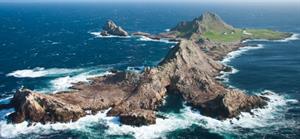 If the day is clear, you can just make out Farallon National Wildlife Refuge from the Golden Gate Bridge. Thirty miles seaward of San Francisco and surrounded by a national marine sanctuary, it spreads across the South and North Farallon Islands, Middle Farallon Island, and Noonday Rock — granite peaks that rise as high as 340 feet. The refuge was created in 1909 by President Theodore Roosevelt to protect seabirds and marine mammals. All the islands save Southeast Farallon, the largest at 70 acres, have also been designated a federal wilderness area.
If the day is clear, you can just make out Farallon National Wildlife Refuge from the Golden Gate Bridge. Thirty miles seaward of San Francisco and surrounded by a national marine sanctuary, it spreads across the South and North Farallon Islands, Middle Farallon Island, and Noonday Rock — granite peaks that rise as high as 340 feet. The refuge was created in 1909 by President Theodore Roosevelt to protect seabirds and marine mammals. All the islands save Southeast Farallon, the largest at 70 acres, have also been designated a federal wilderness area.
The Farallon Islands host the largest seabird colony in the contiguous United States. At least 200,000 seabirds representing 13 species nest here on rocky terraces and hillsides, cliffs, and underground crevices and burrows. Among these species is the gravely imperiled ashy storm-petrel — so named because of the way it seems to walk on water (as St. Peter is said to have done), its tendency to seek shelter on ships in heavy weather, and its color. No more than 10,000 ashy storm-petrels are thought to remain on the planet, and about half of them breed on the refuge. Most have long-term pair bonds and produce only one chick a year.
The refuge provides haul-out and breeding sites for harbor seals, northern fur seals, elephant seals, California sea lions, and Steller sea lions. And it sustains two creatures found nowhere else on earth: the Farallon camel cricket and the Farallon arboreal salamander.
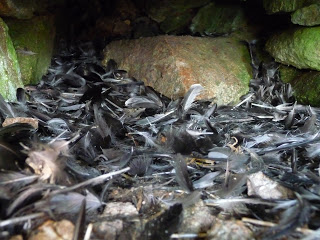 Unfortunately, the camel cricket, arboreal salamander, and many bird species that depend on the refuge face an uncertain future because most of the refuge — almost all 120 acres of the South Farallones — is overrun by house mice. The mice are descendants of stowaways that jumped ship when 19th century seal hunters used the islands as a base. When the mouse population peaks each October, there can be as many as 500 mice per acre — among the highest densities ever recorded. Biologists report that the ground seems to undulate. Before buildings on Southeast Farallon were sealed, mice would scamper over human arms, heads, feet, and faces and occasionally get crushed when someone rolled over in bed.
Unfortunately, the camel cricket, arboreal salamander, and many bird species that depend on the refuge face an uncertain future because most of the refuge — almost all 120 acres of the South Farallones — is overrun by house mice. The mice are descendants of stowaways that jumped ship when 19th century seal hunters used the islands as a base. When the mouse population peaks each October, there can be as many as 500 mice per acre — among the highest densities ever recorded. Biologists report that the ground seems to undulate. Before buildings on Southeast Farallon were sealed, mice would scamper over human arms, heads, feet, and faces and occasionally get crushed when someone rolled over in bed.
The mice are shredding the native ecosystem. They spread seeds of invasive plants, prey on the pollinators of native plants, are thought to infect shore habitat of seals and sea lions with dangerous pathogens, eat the camel crickets, and compete with (and probably eat) the arboreal salamanders.
And by attracting burrowing owls to the islands, these mice threaten the ashy storm-petrel with extinction. The owls feast on mice, but that’s not a good thing, even for the owls. Now, instead of resting briefly and continuing south on their fall migration, some owls remain on the Farallones into winter, unable to tear themselves away from the mouse smorgasbord. With the first rains of late fall, seeds germinate and the mice are without a main source of food — so they start to eat each other. Then all save a few (although enough to regenerate plague-like densities the following year) starve to death. With the mice gone, the owls switch to a diet of ashy storm-petrels. Then, because there aren’t enough petrels to sustain them, some owls sicken and die. Owls that leave face a late and dangerous migration.
Mice were wreaking such ecological havoc that as early as 2004, the U.S. Fish and Wildlife Service, which manages national wildlife refuges and is legally mandated to restore and protect native ecosystems thereon, resolved to rid the South Farallones of the invasive aliens. As the agency well knew, the use of its most reliable tool, brodifacoum, would require lengthy environmental review and generate shrill opposition.
The Solution
On the mainland, brodifacoum has been grossly abused by the public. It’s a second-generation anticoagulant that inhibits Vitamin K, thereby causing any mammal or bird that ingests it to bleed out internally. By 1975, rats had built resistance to the first-generation anticoagulant called warfarin — the same agent doctors prescribe to thin human blood. So in that year, brodifacoum was introduced. It is nasty stuff — a nuke among pesticides.
Because it accumulates in the liver, brodifacoum can kill almost any bird or mammal that eats the dead or dying rodents. When applied carelessly by members of the public, it routinely poisoned birds and mammals.
In 2008, the Environmental Protection Agency determined that brodifacoum (as used by the public on the mainland, not professional wildlife managers on islands) posed an “unreasonable risk” to children, pets, and wildlife and restricted its use. For mainland rodent control, anticoagulant poisons can be counterproductive because they also kill rodent predators. So you’re apt to wind up with a worse problem than you started with.
On islands, rodent predators are few or nonexistent. That’s why alien rodents can dominate and degrade island ecosystems, and that’s why brodifacoum is essential for restoring those ecosystems. Wildlife advocates who have seen the devastation wrought by anticoagulant poisons on the mainland sometimes have a hard time wrapping their heads around this reality.
The Opposition
Leading the charge against the South Farallones recovery project and engaging the animal-rights community along with a large segment of the general public is Maggie Sergio of Fairfax, California. She is a passionate wildlife advocate who has dedicated much of her adult life to rehabbing injured and poisoned birds and mammals on the mainland. As an unpaid, unedited contributor to the Huffington Post, she writes about what she perceives as the project’s dangers, and she has started an online petition to block the use of brodifacoum by professional wildlife managers on the South Farallones.
Sergio contends that eradication of alien rodents from islands is a ruse by the Fish and Wildlife Service to funnel tax dollars to Island Conservation. “People are doing this to make money,” she told me. “This is a gravy train. This is insanity.”
While wildlife biologists disagree with this assessment, they have to admit that some of Sergio’s assertions are accurate. For example, she has it right when she warns of probable “by-kill” of non-target species, primarily western gulls. (Fortunately, western gulls are abundant, and their population is unlikely to be permanently affected by any kind of by-kill.)
And in the Huffington Post, Sergio correctly, if unhappily, cites the enthusiastic support for mouse eradication of all bird groups save one. “The American Bird Conservancy,” she writes, “is the only bird conservation organization that hasn’t been drinking the USFWS/Island Conservation Kool-Aid.”
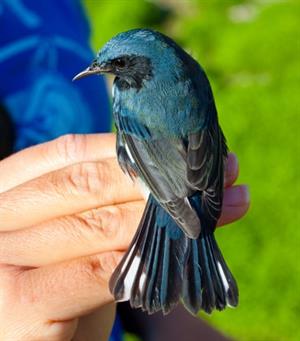 The American Bird Conservancy does have concerns. One of the main ones is that the Farallon Islands are so close to San Francisco that poisoned gulls might fly to, say, Fisherman’s Wharf and flounce around in dramatic death throes, thereby giving brodifacoum an even worse reputation than it already has. “We think brodifacoum is a very important tool,” says George Wallace, the group’s vice president for oceans and islands. “It’s the only way to get a complete kill. We don’t want public opinion polarized against these projects.”
The American Bird Conservancy does have concerns. One of the main ones is that the Farallon Islands are so close to San Francisco that poisoned gulls might fly to, say, Fisherman’s Wharf and flounce around in dramatic death throes, thereby giving brodifacoum an even worse reputation than it already has. “We think brodifacoum is a very important tool,” says George Wallace, the group’s vice president for oceans and islands. “It’s the only way to get a complete kill. We don’t want public opinion polarized against these projects.”
As far as I can determine, the only environmental organization that openly opposes the recovery project is the Ocean Foundation, which, among other things, frets about what it calls the “inherently inhumane” treatment of mice.
The city of San Francisco, recycling one of the more ubiquitous pieces of misinformation about the project (which originally appeared in the Huffington Post and an Animal Legal Defense Fund press release), has complained in an open letter to the U.S. Fish and Wildlife Service that the plan calls for “1.3 metric tons of brodifacoum to be aerially dispersed from helicopters” and that “the project should [therefore] not move forward.”
There isn’t enough brodifacoum in the world to drop 1.3 metric tons. The plan calls for no more than 1.54 ounces for all 120 acres of the South Farallones. This would be mixed with grain. Such is the rodenticide’s lethality.
It is this lethality that renders second-generation anticoagulants like brodifacoum the only option for restoring most rodent-infested islands to ecological health. You need a nuke. There’s no “almost.” You kill every rodent save non-pregnant ones of the same sex or you fail. And sometimes rodent eradication does fail. But it fails rarely.
“The opposition is real,” remarks Island Conservation’s CEO, Bill Waldman. “I think it’s coming from a relatively few individuals who don’t understand the mechanics of these projects. They’d prefer, for instance, to see petrels continue to suffer 40 percent predation every year than see mice removed. We and many others have chosen to remove local populations of invasive rodents to protect native populations of rare and endangered species. If you want to save those species, this is what you have to do. The extinction process today is playing out mostly on islands. That’s why we exist.”
Disaster That Wasn’t
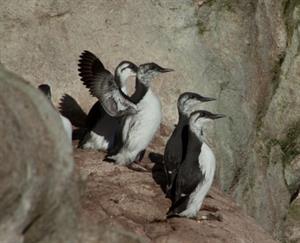 That extinction process was playing out on the 6,861-acre Rat Island in the Aleutians until seven years ago.
That extinction process was playing out on the 6,861-acre Rat Island in the Aleutians until seven years ago.
The island, originally called Hawadax, got renamed Rat Island shortly after 1780, the year a Japanese ship ran aground and disgorged Norway rats that spread like a virus. The alien rats devoured adult birds, nestlings, eggs, seeds and plants, eliminating much of the native vegetation and most of the island’s songbirds, shorebirds, and seabirds. The island’s status as part of the Alaska Maritime National Wildlife Refuge, established in 1980, became a sick joke. Visiting biologists described the place as “eerily silent.”
In 2008, the U.S. Fish and Wildlife Service, in partnership with Island Conservation and The Nature Conservancy, saturated Rat Island with brodifacoum-laced bait. A lot went wrong. Early snow covered and preserved the bait. Bald eagles, off their routine of feasting on distant salmon, ate the poisoned rats. Monitors recovered 422 bird carcasses, including 46 bald eagles and 320 glaucous-winged gulls. Opponents of rodent eradication call the project a “disaster.”
Advocates acknowledge the horrendous by-kill but cite ecological success. Today, the island, again called Hawadax, is rat free. Eagles are essentially recovered; gulls are more than recovered; and an entire ecosystem, including native plants and birds rarely (if ever) seen for 230 years, has been reborn. Surging back have been species including giant song sparrows (found only in the Aleutians), tufted puffins, black oystercatchers, rock sandpipers, Leach’s storm petrels, snow buntings, Pacific reed grass, longawn sedge, and crowberry.
The Rat Island experience taught the Fish and Wildlife Service and its partners much about how to minimize by-kill, but they can’t eliminate it. Agency biologist Beth Flint, who has worked on successful rat eradications on Pacific islands, likens brodifacoum to chemotherapy for cancer. “You know you’re going to incur collateral damage,” she says. “Good cells will die, and you’ll be sick. But it’s worth it. People are being misguided. We have to respond to every Freedom of Information Act request. That’s hundreds of hours gathering documents because opponents are fishing for anything that might show that agency people have done something improper. It takes away our already extremely skeletal staff to answer people who don’t understand science.”
Flint shares a video (easily found via an Internet search) with those worried about brodifacoum’s alleged cruelty to rodents. It shows mice on Gough Island in the South Atlantic swarming antlike over a Tristan albatross chick — a critically endangered species — and slowly eating it alive. She offers this to anyone worried about poisoning mice on the Farallon National Wildlife Refuge, where the mice become so desperate for food in late fall that they eat their own: “Opponents need to ask themselves how humane it is to continue letting mice cannibalize each other and then starve.”
Uncertain Future
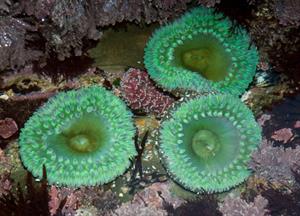 Some of the Ocean Foundation’s concerns are sensible enough. I asked Farallon National Wildlife Refuge manager Gerry McChesney to address the Ocean Foundation’s fear that planned hazing of western gulls won’t effectively keep them off the islands when the poison is put down. “We did a two-week trial in late fall 2012,” McChesney replied. “At dumps, gull hazing works for a while, but they come back because they want that food. To scare them away takes a lot of work. But on the Farallones, gulls come in mostly to roost overnight. They feed offshore. We were very successful. Within two days, we were keeping most of the gulls away. It took several weeks after the hazing trial before they came back.”
Some of the Ocean Foundation’s concerns are sensible enough. I asked Farallon National Wildlife Refuge manager Gerry McChesney to address the Ocean Foundation’s fear that planned hazing of western gulls won’t effectively keep them off the islands when the poison is put down. “We did a two-week trial in late fall 2012,” McChesney replied. “At dumps, gull hazing works for a while, but they come back because they want that food. To scare them away takes a lot of work. But on the Farallones, gulls come in mostly to roost overnight. They feed offshore. We were very successful. Within two days, we were keeping most of the gulls away. It took several weeks after the hazing trial before they came back.”
The American Bird Conservancy, which does not oppose the project in principle, suggests that where gulls congregate, bait be deployed at a few small, contained areas (bait stations) instead of broadcast by helicopter. That is not an option, McChesney says. “We had to move away from bait stations early on. You need to bait mice over months. That would put human lives at risk because a lot of areas are hard to climb. And seals, sea lions, and nesting seabirds are extremely sensitive to disturbance.”
The Fish and Wildlife Service had hoped to rid the Farallon National Wildlife Refuge of alien mice by fall 2014, but there is virtually no chance that any bait will be deployed before 2016.
By early May 2015, more than 32,000 people had signed Sergio’s petition demanding cancellation of the recovery project. Now, with mounting opposition and budget restraints that are delaying the final environmental review, McChesney says he’s not sure the project will ever happen. If it doesn’t, a unique island ecosystem will continue to degrade and the ashy storm-petrel may become extinct.